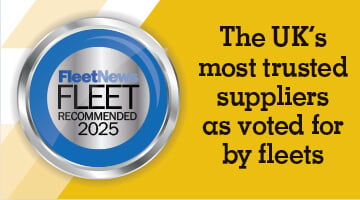Britain’s biggest fleets are operating more than a quarter of a million vans, up almost 3% year-on-year, according to Fleet200 research published by Fleet News.
However, while the number of vans registered to the top 20 fleets across five sectors reached a record high, the number of cars has fallen.
It is yet another reduction for the Fleet200 car total, falling by 3,540 units to 255,719, while the van total was up 6,973 to 250,908 units.
Growth is being driven by fleets downsizing to smaller, cheaper, less CO2/NOx-emitting and less regulated vans – and the home delivery sector, which is fast becoming consumers’ preferred option for everything from groceries to electrical items.
The trend in downsizing is also reflected in the Fleet200 data compiled for Fleet News by Sewells which shows trucks operated by Britain’s biggest fleets slipped slightly by 842 to 65,513 units.
The buoyant van market was illustrated by figures released by the Society of Motor Manufacturers and Traders (SMMT) in July.
They revealed that van sales were up 19.3% compared to last year, while overall sales of light commercial vehicles (LCVs) hit a record high during the first six months of 2015, with 186,404 new vehicles registered.
CAP says year-end LCV registrations are likely to top 360,000 units, a new record, thanks in part to the improving UK economy.
However, reflecting the findings of Fleet200, CAP also suggests that record registrations have mainly been shaped by commercial vehicle operators moving away from larger vehicles to smaller 3.5-tonne light commercials.
CAP told Fleet News that the booming LCV market has been driven by demand for light commercials which are not subject to operator’s licence, tachograph, HGV MOT or driver’s licence legislation.
John Watts, CAP senior editor, commercial vehicles and motorcycles, explained: “In recent years, many operators have simply abandoned running heavier commercials altogether and have replaced 7.5-tonne vehicles with 3.5-tonne light commercials.
“Their operating costs are significantly lower, there are no weight restrictions, they are much more man-oeuvrable, their physical presence is less intrusive, and their environmental impact is perceived as less.
“Consequently, the light commercial market is enjoying the resulting unprecedented growth and looks to be heading for a record year for registrations.”
It takes approximately three times as many 3.5-tonne vans to move the same goods as a traditional 7.5-tonne truck.
“However, in terms of customer service, especially in today’s online delivery world in which we now live, having multiple smaller vehicles on shorter routes results in faster doorstep deliveries,” Watts said.
Figures from the Office for National Statistics (ONS) report that the average weekly spend online in 2014 was £718.7 million, of which 15% was food retailing, 37% non-food stores (eg. department, household goods) and 48% non-store retailing. This was an increase of 11.8% compared with 2013.
Home delivery from department stores is the fastest-growing sector, rising 53% since 2011, according to the ONS. However, just 10% of total sales are made online, suggesting that this level of growth will continue to accelerate.
Likewise, food retailing: less than 4% is sold online, but the growth since 2011 is 37%
James Broadhead, CEO of Close Brothers Motor Finance, also believes that the rapid growth of online shopping has helped drive the rise in van registrations.
“The amount consumers spend online has more than doubled in the last five years and it is considered to be a major factor behind the buoyant LCV market as it has placed greater demand on delivery and transport firms to keep up,” he said.
“The outlook appears positive, particularly for dealers, as with online sales predicted to rise further in the coming years, it suggests there may be a consistent demand for new and used vans.
“It’s important, however, that dealers respond now to ensure that they are able to take advantage of any opportunities as they arise, especially as it’s such a diverse market.
“The needs of every van user will be different so it’s crucial that dealers can offer them the right vehicle to meet both their business and their financial requirements.”




















patricknolan - 11/09/2015 01:26
Hear in lies the problem we face! The comment ‘there are no weight restrictions’ and lack of legislation on vehicles under 3.5 tonne is an encouragement of some operators to lower their standards below the legal enforcement that is the standard of most LGV fleets. The vehicle Operators licence was brought into legislation 20 years ago to clean up unscrupulous acts and improve standards of operators of LGVs which it has, without any doubt within the UK. The current MoT first time pass rate for LGVs within the UK is over 77% compared to LCV having almost 50% first time MOT failure rate for vans going through the Class 7. While I understand the reasons for the commercial change in vehicle weight and operation, I don’t think hiding below the legislation is the solution for decent operators, the country or the environment. We must all look to improve the safety and performance of those operating immediately below the Goods Vehicles (Licensing of Operators) Act 1995 and drive out of our industry those who are avoiding the strivings of most of us to improve safety and environmental impact of our activities.